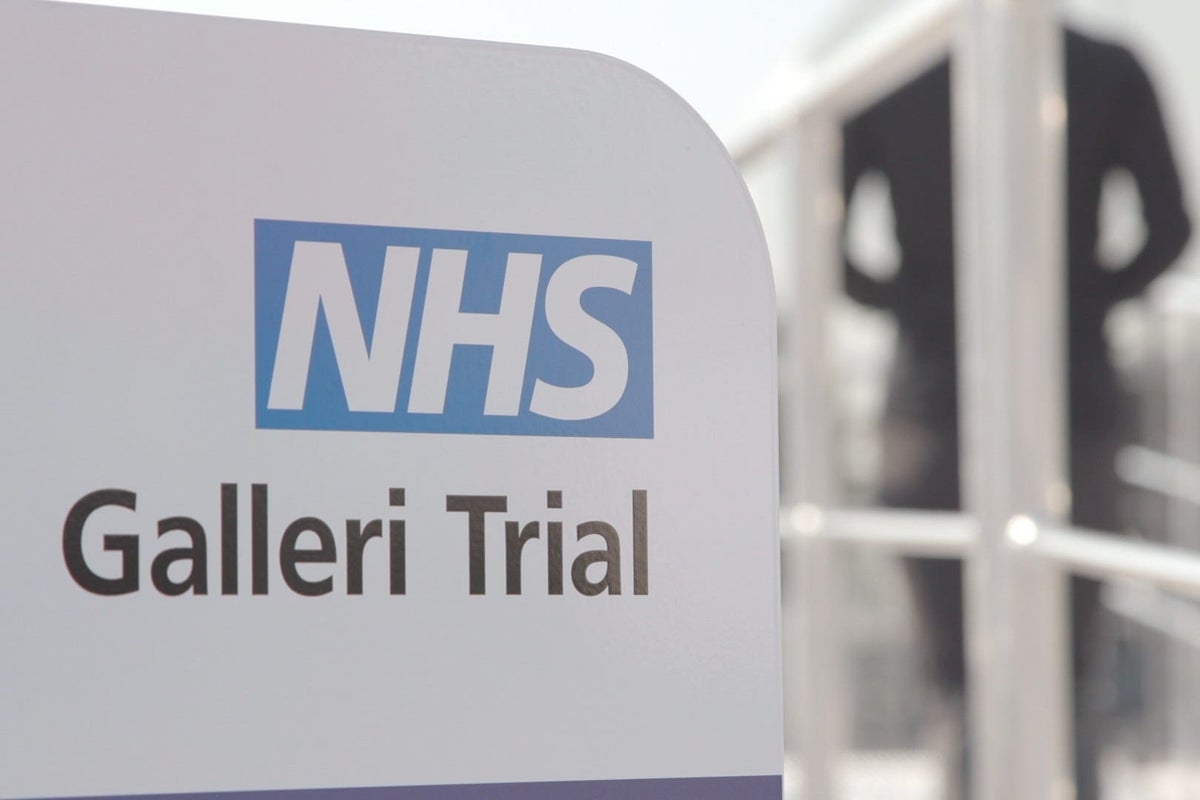
A simple blood test can pick up cancer cases among patients who have been falsely reassured they do not have the disease, a study suggests.
Experts from the University of Oxford and the diagnostics firm Grail found that a third of people initially thought to have a “false positive” result – that is, flagged as potentially having cancer following a blood test but then told they did not – actually did have the disease.
The Galleri blood test by Grail can be given annually and looks for the DNA “fingerprint” of more than 50 deadly cancers, often picking up signs before symptoms appear.
US results last week showed that, of those people without symptoms found to have a “cancer signal” detected in their blood, 61.6% went on to be diagnosed with cancer.
And in 92% of cases, the test could pinpoint in which organ or tissue the cancer arose, meaning time and money could be saved on other scans and other tests.
Now, a new study, based on 6,238 NHS patients, has been released and analysed.
All the patients in the study had symptoms that their GP thought may be cancer and were referred for diagnostic scans and tests.
Patients also had blood samples analysed by the Galleri test and its predictions were compared with the diagnosis obtained by standard NHS care.
GPs did not have access to Galleri blood test results and could not use them to choose which scans people had.
The results showed that 35.4% (28 of 79 people) reported as a false positive in the period after their Galleri test were actually diagnosed with cancer within two years.
And in 27 of the 28 people, Galleri was able to say which organ or tissue the cancer was arising in.
In more than half of cases, the cancer type people had did not match the tests and scans NHS doctors had thought they had needed based on their symptoms.
This suggests the test could be a useful tool for diagnosing people and helping GPs direct patients to the right scans.
Brian Nicholson, associate professor at the Nuffield Department of Primary Care Health Sciences, University of Oxford, and co-lead investigator of the study, said the results of multi-cancer early detection (MCED) blood tests such as Galleri should be followed up when reporting as a false positive.
He said: “The conversion of false positive results to cancer diagnosis in this updated analysis of the SYMPLIFY study highlights the importance of proactive follow-up on positive MCED results, as one-third of the apparent false positive results were actually cancers the standard-of-care diagnostic process couldn’t immediately identify.
“Additionally, the results underscore the value of Galleri’s cancer signal origin prediction, which aligned with the eventual diagnosis in almost all of the cases initially considered to be false positives.”
The results are being presented at the Early Detection of Cancer Conference in Oregon in the US but have not yet been published in a peer-reviewed journal.
Sir Harpal Kumar, president of international business and biopharma at Grail, and former head of Cancer Research UK, said: “This robust data demonstrates the potential benefit of the Galleri test as a diagnostic tool for individuals presenting with symptoms of cancer, particularly where those symptoms are non-specific.”
Sir Harpal told the PA news agency: “Over two years, of the people who were called false positive, over a third of them actually were diagnosed with cancer in that two-year period, of which over half were in the first nine months.
“This suggests it wasn’t a false positive at all.
“And, if you add those additional cases back in, it takes the positive predictive value (of the test) up to 84%, which is remarkable.
“To put that into context, we currently refer people for urgent investigation and only 6% of them are diagnosed with cancer, so to have a test that could possibly get you up to 84%, we would argue, would be a very valuable addition and enable much more efficient diagnostic investigation.
“The second key conclusion is that, of those additional cases that were turned from false positive to true positive, in all but one, the predicted type of cancer was correct.
“And the reason that is so important is because when people do present with symptoms, a large number of those have what we call non-specific symptoms.
“These can be things like unexplained weight loss or abdominal pain, and it can be very difficult for a GP to know exactly which clinic they should send the patient to.
“And in over half of the cases where the false positive turned into a true positive, it was that the patient had not gone to the right clinic for the cancer that they were subsequently diagnosed with.
“The notion here is we have something that could really help GPs send patients to the right clinic quickly so that they have the right investigations quickly, and therefore get diagnosed quickly.”
